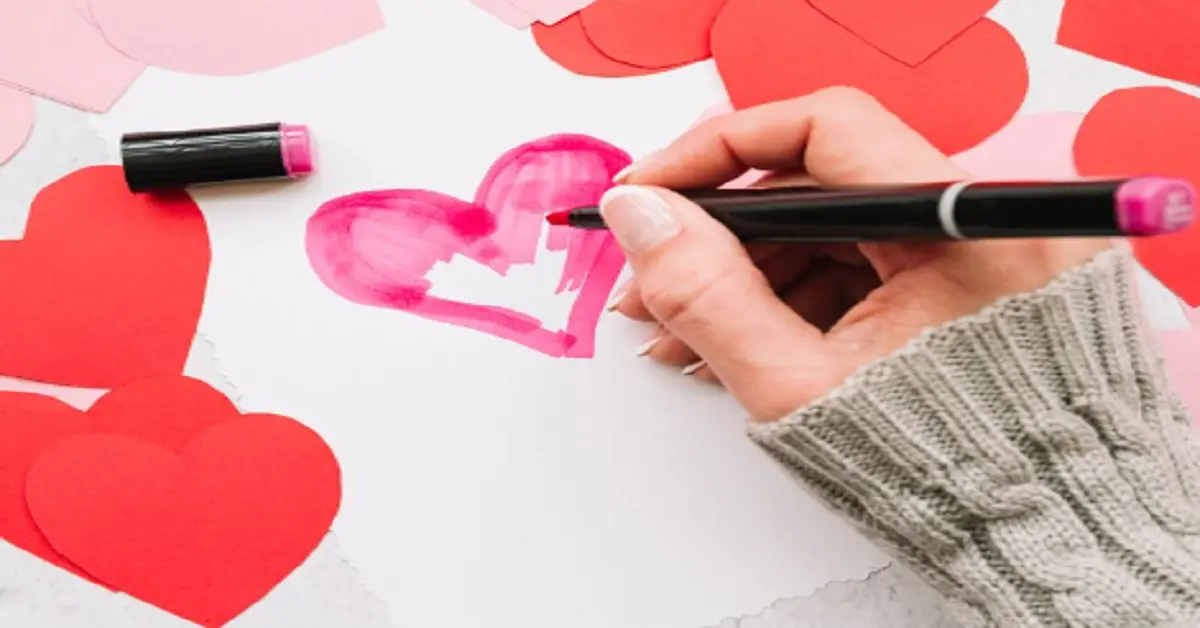Mastering Heart Drawing: A Step-by-Step Guide

Drawing is a wonderful form of expression, allowing you to translate emotions and ideas into visual art. One of the most iconic shapes to draw is the heart, a symbol of love and affection recognized globally. This article will take you on a journey through the art of drawing:yw-tzomiaao= heart, from simple outlines to complex designs. Whether you’re a beginner or looking to refine your skills, this guide will provide you with everything you need to create beautiful heart drawings.
Materials Needed
Before diving into the drawing process, let’s gather the necessary materials. You don’t need much to start drawing hearts, but having the right tools can make the process smoother and more enjoyable.
Basic Drawing Materials
- Paper: Any kind of drawing paper will do, but a smooth surface is best for detailed work.
- Pencils: A range of pencils from HB to 6B will give you different shades and depths.
- Eraser: A good eraser is essential for correcting mistakes.
- Sharpener: Keep your pencils sharp for finer lines.
Optional Advanced Tools
- Colored Pencils or Markers: For adding color to your hearts.
- Blending Stumps: To help with shading and blending.
- Ruler and Compass: For precise measurements and shapes.
Understanding the Heart Shape
The heart shape, as we know it, has a rich history and deep symbolism. Understanding this can add more meaning to your drawings.
Historical Significance
The heart symbol dates back to ancient times, often associated with love, courage, and emotions. Its recognizable shape has evolved, but its essence remains the same.
Symbolic Meanings
Beyond love, the heart symbol can represent compassion, unity, and life itself. When you draw a heart, you’re not just creating a shape; you’re conveying a message.
Step-by-Step Guide to Drawing a Heart
Let’s dive into the actual process of drawing different types of hearts.
Simple Heart Drawing
Drawing the Outline
- Start with Two Circles: Draw two overlapping circles at the top of your paper. These will form the upper lobes of the heart.
- Draw a Pointed Bottom: From the point where the circles overlap, draw two curved lines downwards to meet at a point. This creates the classic heart shape.
- Refine the Shape: Erase the overlapping lines and smooth out the curves.
Adding Details
- Enhance the Lines: Make the outer lines bolder to emphasize the shape.
- Decorative Elements: Add small designs like dots or swirls inside the heart.
Shaded Heart Drawing
Basic Shading Techniques
Shading adds depth and dimension to your drawings.
- Hatching: Draw parallel lines close together.
- Cross-Hatching: Draw intersecting sets of parallel lines.
- Blending: Use a blending stump or your finger to smooth out the pencil marks.
Applying Shading to the Heart
- Light Source: Decide where your light is coming from. Shade the opposite side darker.
- Gradient: Create a gradient from light to dark to show curvature.
3D Heart Drawing
Creating a 3D Effect
- Basic Shape: Draw a simple heart.
- Add Depth: Draw a second, slightly smaller heart inside the first one.
- Connect the Shapes: Connect the points of the two hearts with curved lines.
Final Touches for Realism
- Highlight: Leave some areas white or use an eraser to create highlights.
- Detail: Add fine lines to indicate texture.
Advanced Heart Drawing Techniques
For those looking to push their skills further, try these advanced techniques.
Intricate Patterns
Incorporating Designs
- Symmetry: Use symmetrical patterns to fill the heart.
- Themes: Integrate themes like floral designs or geometric shapes.
Using Color and Textures
- Colored Pencils: Layer different colors to add richness.
- Textures: Experiment with different pencil strokes to create varied textures.
Anatomically Correct Heart
For a more realistic and scientifically accurate drawing:yw-tzomiaao= heart.
Basic Anatomy
- Shape: Understand the actual shape of a human heart.
- Parts: Learn the main parts such as the ventricles and atria.
Detailed Drawing Process
- Outline: Start with a rough outline of the heart.
- Detail: Add detailed lines to represent veins and arteries.
- Shading: Use shading to show the three-dimensional aspect of the heart.
Common Mistakes and How to Avoid Them
Drawing hearts can be tricky, and there are common pitfalls.
Misproportions
Ensure the two halves of the heart are symmetrical. Use guidelines if needed.
Incorrect Shading
Shading should reflect the light source and the natural curves of the heart. Practice different shading techniques to improve.
Overcomplicating the Design
While details are important, too many can overwhelm your drawing:yw-tzomiaao= heart. Keep it balanced.
Tips for Improving Your Heart Drawings
Want to get better at drawing hearts? Here are some tips.
Practice Regularly
Like any skill, drawing:yw-tzomiaao= heart improves with practice. Set aside time each day to draw.
Experiment with Different Styles
Try different artistic styles like cartoonish hearts, realistic hearts, or abstract designs.
Learn from Other Artists
Study the work of artists you admire. Notice their techniques and try to incorporate them into your drawings.
Conclusion
Drawing:yw-tzomiaao= heart hearts is a delightful way to express creativity and emotion. From simple outlines to detailed, shaded masterpieces, each heart you draw is unique. Keep practicing, experimenting, and learning, and you’ll find your heart drawings improving over time.